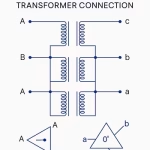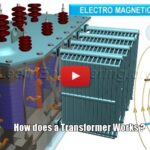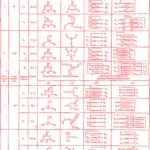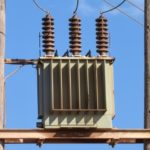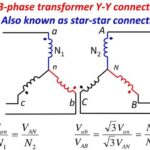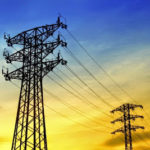Three-phase transformers are essential in power transmission and distribution systems. They are designed to step up or step down voltages in three-phase systems, and the type of connection used determines their performance under various load and system conditions. This article discusses various three-phase transformer connections including their working, advantages, and applications.
Types of Three-Phase Transformer Connections
- Star-Star (Y–Y) Connection
- Delta-Delta (Δ–Δ) Connection
- Star-Delta (Y–Δ) Connection
- Delta-Star (Δ–Y) Connection
- Open Delta (V–V) Connection
- Scott or T-T Connection
1. Star-Star (Y–Y) Transformer Connection
This connection is commonly used in small, high-voltage transformers. The primary and secondary windings are both connected in a star (Y) configuration. It is economical because each phase winding experiences only 1/√3 of the line voltage, which reduces the insulation requirement.
Key Points:
- Line-to-line voltage ratio is same as the transformation ratio of each transformer.
- There is a 30° phase shift between line and phase voltages.
- Performs well under balanced load conditions only
Limitations:
- Under unbalanced loading, the neutral point shifts, leading to unequal phase voltages.
- Power supply to single-phase loads becomes inefficient due to high impedance in the isolated primary coils.
- If the primary neutral is isolated, triple-frequency components of magnetizing current (third harmonics) have no return path, leading to waveform distortion.
Solutions:
- Ground the primary neutral to the generator neutral to stabilize the voltage and neutral point.
- Use a tertiary delta-connected winding to allow third harmonic components to circulate and maintain sinusoidal flux and voltage waveforms.
2. Delta-Delta (Δ–Δ) Transformer Connection
This connection is suitable for large, low-voltage transformers. Both the primary and secondary windings are delta connected. It is preferred in industrial applications for its robustness and ease of parallel operation.
Key Advantages:
- No phase displacement between primary and secondary sides.
- Third harmonic components of magnetizing current circulate within the delta loop, maintaining sinusoidal voltages.
- Performs well under unbalanced load conditions.
- If one transformer fails, the system can continue in open-delta (V–V) configuration with 58% of the total capacity.
3. Star-Delta (Y–Δ) Transformer Connection
This connection is used at the receiving end (substations) of transmission lines for stepping down voltage. The primary is Y-connected and the secondary is Δ-connected.
- The line voltage ratio is (1/√3) × transformation ratio of each transformer.
- A 30° phase shift exists between primary and secondary line voltages.
- Cannot be paralleled with Y–Y or Δ–Δ systems due to phase displacement.
- Delta side provides path for third harmonic currents.
4. Delta-Star (Δ–Y) Transformer Connection
This connection is primarily used for stepping up voltage at the beginning of transmission lines. The primary winding is delta connected, and the secondary is star connected with the neutral grounded.
- Common for 3-phase 4-wire distribution networks.
- Supports both three-phase loads and single-phase lighting loads.
- Third harmonic components are handled by the delta side, preventing waveform distortion.
- Not parallel compatible with Δ–Δ or Y–Y due to 30° phase shift.
- Voltage ratio is √3 × the transformation ratio of each transformer.
5. Open Delta (V–V) Transformer Connection
The open-delta or V–V connection is used when one transformer from a Δ–Δ bank becomes faulty or is removed. It enables continued operation at reduced capacity (58%) without full system shutdown.
6. Scott or T–T Transformer Connection
This special connection is used to convert three-phase power to two-phase power or vice versa. It is commonly used in systems involving two-phase motor loads or arc furnaces.
Comparison Table
| Connection Type | Phase Shift | Harmonic Suppression | Unbalanced Load Handling | Neutral Availability | Typical Use Case |
|---|---|---|---|---|---|
| Star-Star (Y–Y) | 0° (but 30° phase difference between phase & line voltages) | Poor (needs tertiary winding or grounding) | Poor (neutral shift issues) | Yes (requires grounding) | High-voltage, small-load systems |
| Delta-Delta (Δ–Δ) | 0° | Good (third harmonics circulate in delta) | Excellent | No | Industrial loads, low-voltage applications |
| Star-Delta (Y–Δ) | 30° lag of secondary line voltage | Good | Good | No | Substation end of transmission line (step-down) |
| Delta-Star (Δ–Y) | 30° lead of secondary line voltage | Good | Good | Yes (star neutral grounded) | Generator end (step-up), power distribution |
| Open Delta (V–V) | Depends on original configuration | Fair | Fair (derated capacity) | No | Backup when one transformer fails in Δ–Δ |
| Scott (T–T) | None (converts 3-phase to 2-phase) | Not applicable | Good | Depends on configuration | Interfacing 3-phase and 2-phase systems |
Conclusion
The choice of transformer connection in a three-phase system depends on the application, voltage level, load conditions, and system compatibility. Y–Y and Δ–Δ are used in balanced systems, Y–Δ and Δ–Y in substations and transmission, and open delta and Scott connections in special or fault-tolerant setups. Understanding the advantages and limitations of each connection helps electrical engineers design efficient and resilient power systems.
FAQs
Q1. Why is the Y–Y connection not ideal for unbalanced loads?
Because the neutral shifts under unbalanced conditions, causing unequal phase voltages.
Q2. Which transformer connection is suitable for stepping down voltage?
Y–Δ connection is most commonly used at substations for stepping down voltage.
Q3. What is the use of an open-delta connection?
It allows continued system operation at 58% capacity if one transformer in a Δ–Δ set fails.
Keywords: three-phase transformer connections, Y–Y transformer, Delta-Delta transformer, star-delta transformer, delta-star transformer, open delta transformer, Scott connection, transformer phase shift
